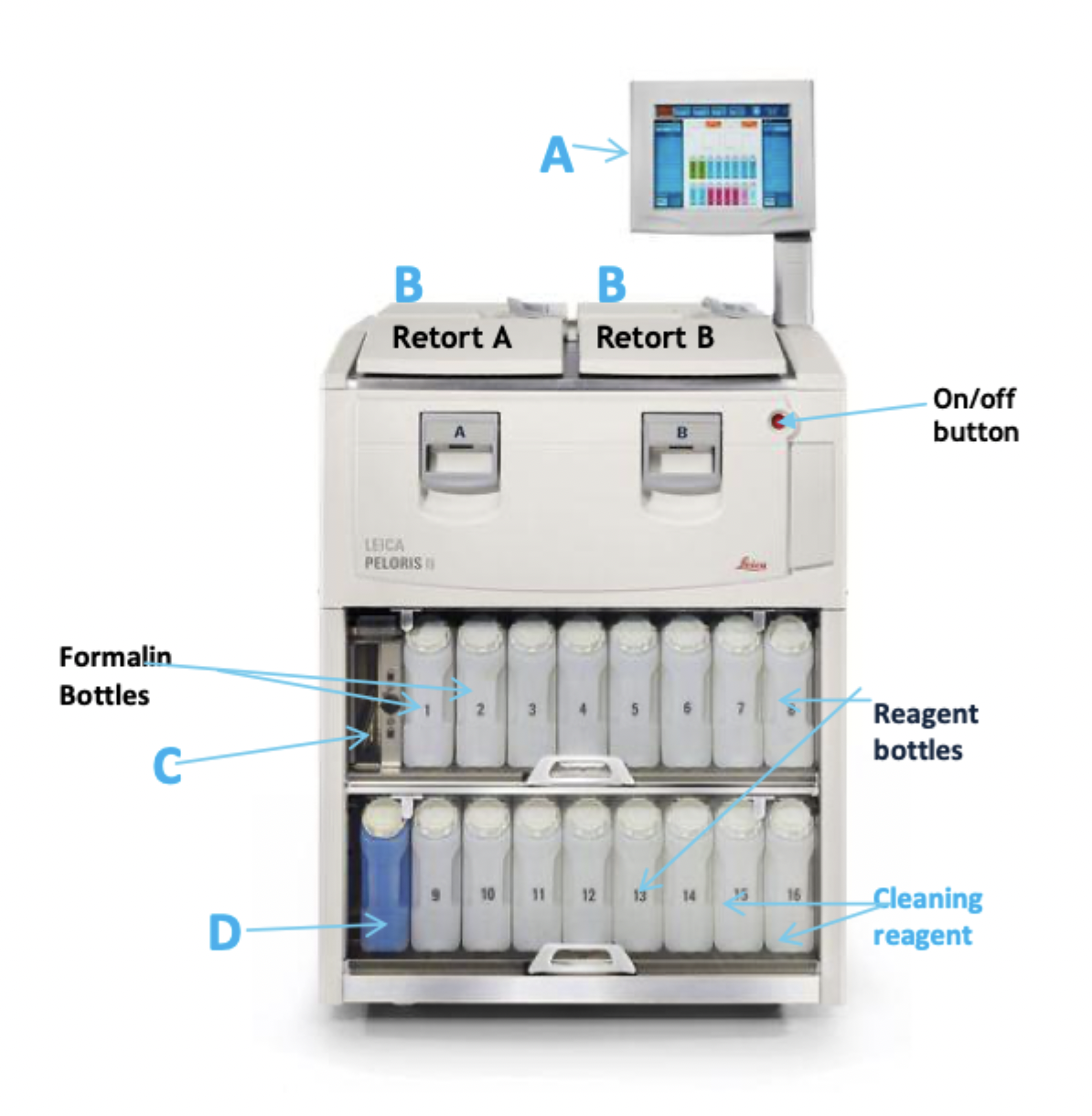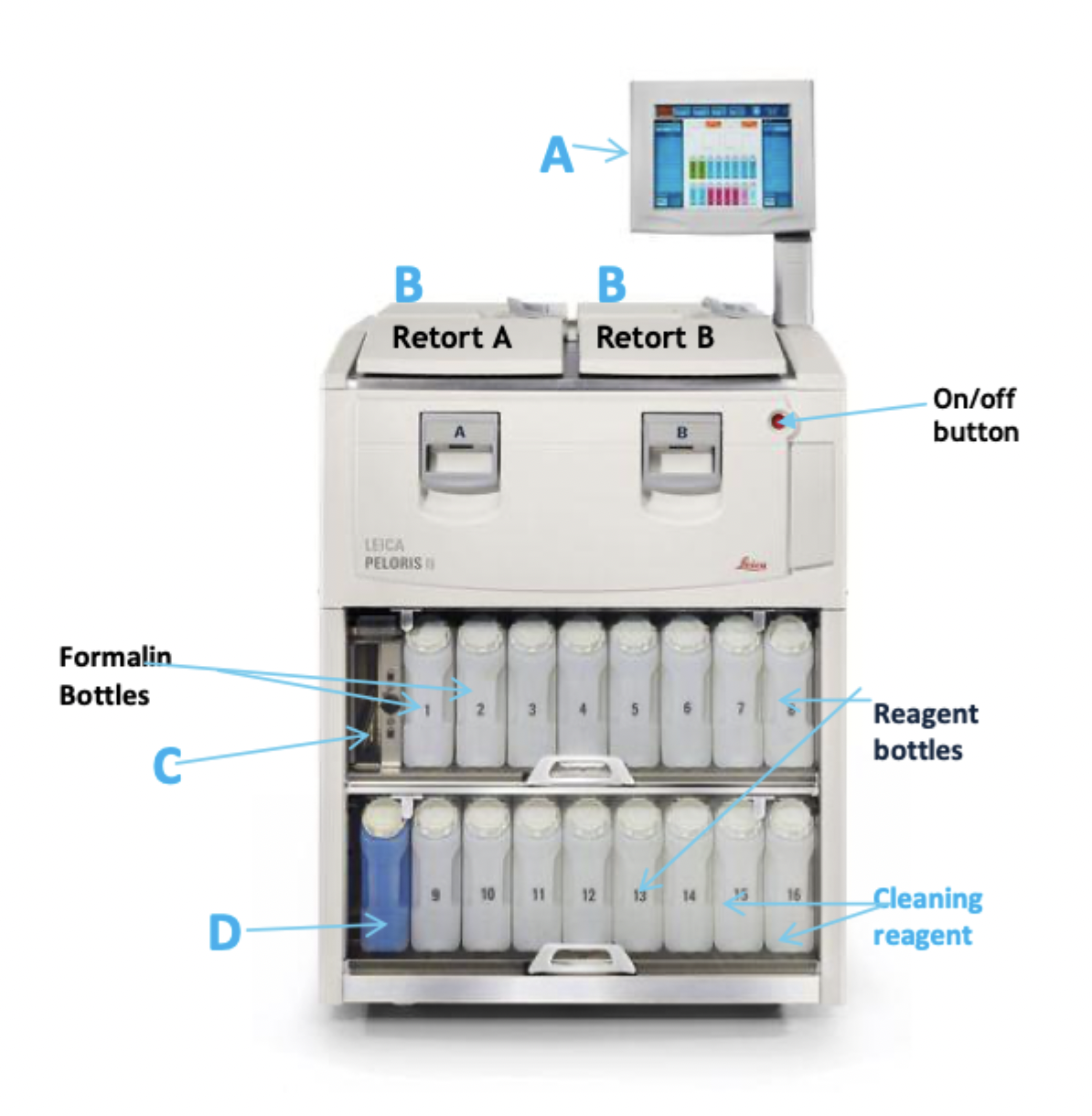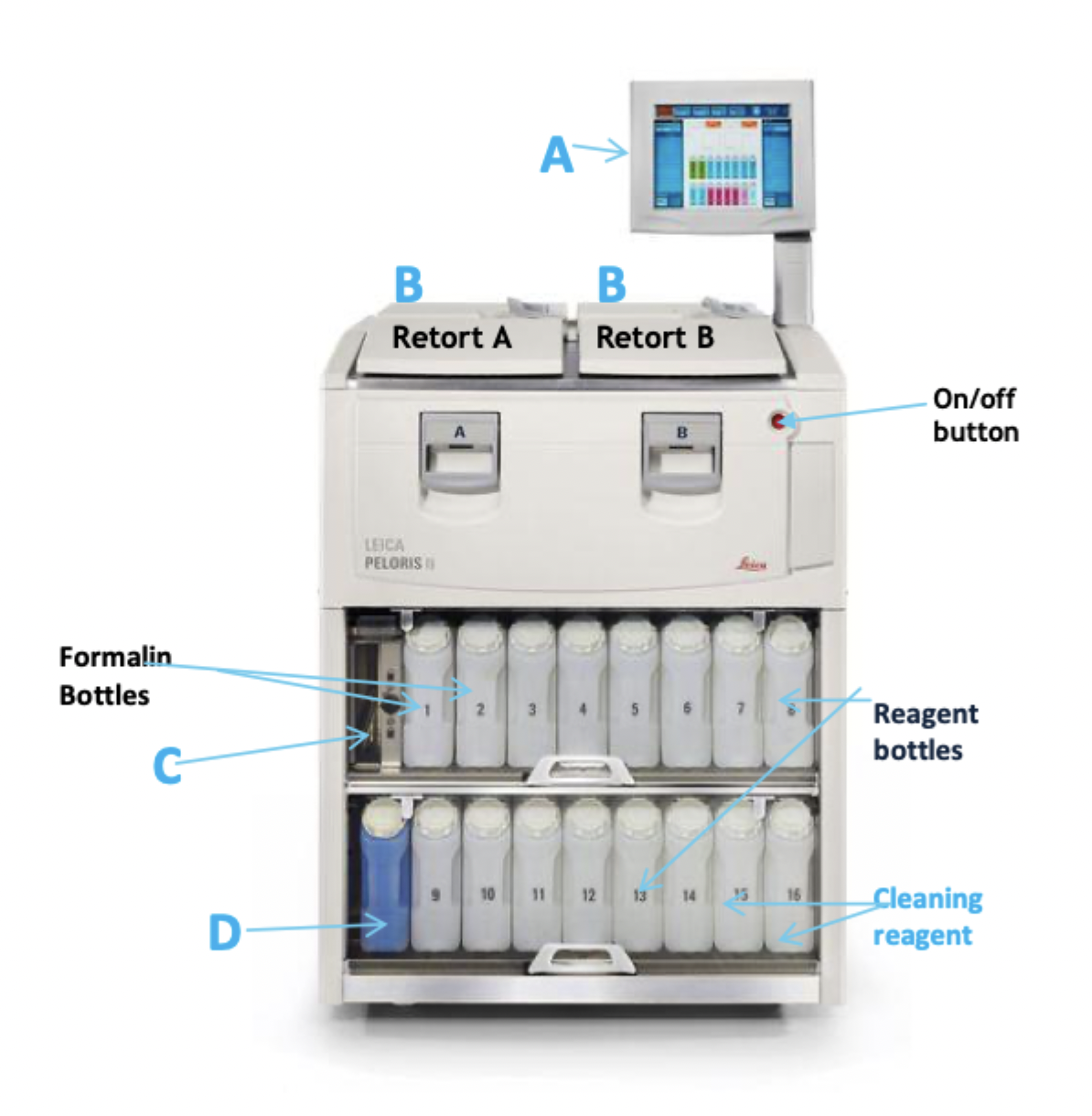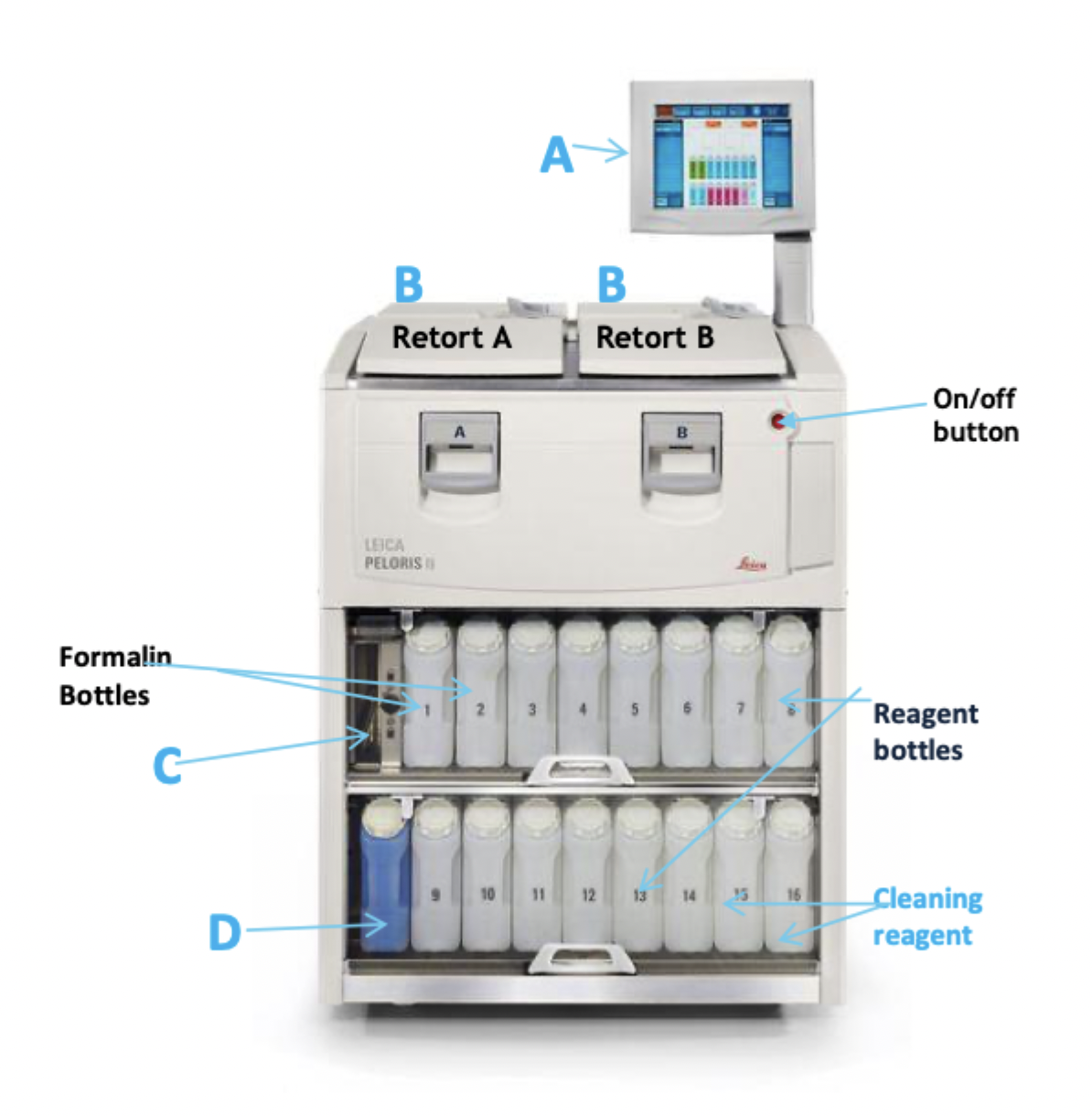9: Decalcification & Tissue Processing
1/73
There's no tags or description
Looks like no tags are added yet.
Name | Mastery | Learn | Test | Matching | Spaced |
|---|
No study sessions yet.
74 Terms
Decalcification
Removal of calcium salts
Decalcification: technique for removing _ from bone or other
_ tissue so that good-quality paraffin _ can be prepared
without compromising tissue _
mineral, calcified, sections, integrity
Decalcification is carried out…
after the specimen has been fixed, prior to routine processing
Principle of decalcification
Criteria for decalcifying agents
Complete removal of calcium salts, cause no damage to tissue, no adverse effect on subsequent process, minimal time for removal of calcium salts
Decalcification can be achieved by…
Acid decalcification, chelating agents, ion-exchange resins, electrophoretic removal using current
Decalcification agents: Strong acid decalcifiers
Nitric acid, HCl (usually at 5-10%)
Decalcification agents: Weak acid decalcifiers
Formic acid, acetic acid, picric acid (not used alone, found as components in some fixatives)
Chelating agents
Bind to calcium ion present in bone, carry out decalcification
Chelating agent examples
EDTA (ethylene diamine tetra-acetic acid) (disodium salt), binds ionised calcium
Using chelating agents takes___, they’re used as a _ solution and as a _ decalcifier for _ tissue with calcium present
days to months, simple, surface, paraffin
Ion exchange resins result in _ decalcifyin
Advantages of electrophoretic decalcification
Shortened time for compelte decalcification, better preservation of soft tissue
Disadvantages of electrophoretic decalcification
Limited number of specimens processed at a time, impracticality
Factors affecting decalcification
Concentration, temperature, agitation, fluid access
Factor: concentration
Affects rate of calcium removal, will be depleted as it combines with calcium (use larger volume, renew several times during process)
Factor: temperature
Proportional relationship
Factor: agitation
Increases rate of decalcification
Factor: fluid access
Determination of decalcification end point
Poking, prodding, bending
Chemical test
X-ray (ideal method)
Decalcification end point chemical test: Ammonium _ solution added to sample of decalcified solution (neutralised with __), precipitation indicates _ of calcium
oxalate, ammonium hydroxide, presence
Tissue processing takes place..
between fixation and embedding in paraffin block
True or false: fixed tissue is the same as a paraffin block
False
Tissue processing: All tissues must be _ before they can be ___. For permanent tissues peparation, they are taken through a series of _ and ___ in a stable medium to provide the necessary support for _.
supported, sectioned for microscopy, reagents, infiltrated and embedded, microtomy
Most widely used tissue processing method for histological studies
Paraffin wax method
Prior to tissue processing, tissue sample must be…
well-fixed, suitable size for processing, not ‘squeezed’ into processing cassette
Tissue processing pre-requisite: Oversized samples will become…
distorted, likely suffer from poor processing
Tissue processing pre-requisite: Fragile, friable, and minute fragments must be…
secured by wrapping in foam pads
Factors affecting tissue processing
Type of tissue, reagents used, agitation/fluid access, temperatureheat, vaccum
Type of tissue
Size, thickness, density, lipid content
Tissue processing: type of tissue (density and lipid content)
Bone: decalcification prior to processing
Fatty tissue: de-fatting prior to processing
Tissue processing: Reagents used
Dependent on type of investigation, to fix or not (formalin or not)
Tissue processing: agitation/fluid access
Enabling faster and more effective processing, automatic processors, provides fluid access from all directions
Tissue processing: temperature
Use of heat to increase or decrease fluid penetration and thus processing times
Tissue processing: vacuum
Use of pressure during wax impregnation: removes air bubbles, decreases boiling point of wax and thus viscosity, lowers boiling point of clearing agents
Stages of processing
Fixation, dehydration, clearing, wax infiltration or impregnation
Tissue processing: dehydration
Remove water (either bound or free in tissue), usually with a series/gradient of alcohols (70% 80% 90% 100%) to remove all water and prevent damage
Dehydration: various components of the call are also removed by this process, such as…
Lower ethanol concentration…
High ethanol concentration…
lipids, water soluble proteins removed, other lipids may be dissolved
Dehydrating agents
Ethanol or alcohol, methanol, iso-propyl alcohol, acetone
Dehydration: Ethanol is…. but….
hydrophilic, dissolves lipids
Dehydration: Methanol is… but is…
hydrophilic, flammable and high toxic
Dehydration: Iso-propyl alcohol is… but is…
hydrophilic, can be used with microwave methods for processing, used for xylene free processing
flammable
Dehydration: Acetone is… but is…
rapid in action
flammable, has poor penetration, causes brittleness with long exposure
Tissue processing: clearing
Removal of dehydrant (de-alcoholisation) from tissue in preparation for wax infiltration
Clearant: reagent must be…
totally miscible with both de-hydrating reagent and infiltrating and embedding medium
Choice of clearing agent depends on
Processor ___ and processing ___
Safety factors
Availablility
_ of removing __
_ of removal of __
Minimal ___
system to be used, conditions, speed, dehydrating agent, ease, molten wax, damage to tissue
Most commonly used clearing agent
Xylene
Other clearing agents
Iso-propyl alcohol
Chloroform, cedar oil and citrus fruit oils, benzene, toluene
Xylene is… but…
economical and doesn’t interfere with staining, causes irritation and tissue damage (long-term effects)
Iso-propyl alcohol is good for… but is…
xylene-free processing, flammable
Chloroform is… but…
slow acting, causes irritation, health hazard, causes secitoning difficulty
Cedar oil is… but…
less hazardous, can interfere with some staining procedures
Citrus fruit oil is… but…
less hazardous and preserved fine tissue structures, can interfere wth some staining procedures
Benzene and toluene give… but are…
good tissue structure preservation, not ideal for routine use (more toxic and less economical than xylene)
Tissue processing: wax infiltration or impregnation
Clearing agent completely replaced with embedding medium (wax) which creates stability and rigidity to enable microtomy
Considerations for wax
Stable at RT, no tissue damage, safe to handle, readily available, used for all tissue types, no interference with staining techniques, relatively low melting point
Duration of infiltration depends on…
Size and type of tissue, clearing agent used, use of vacuum
Infiltration agents
Paraffin wax, resin, celloidin (nitrocellulose compound), plastic/polyester wax (gelatin, agar)
Manual processing
Routine, obsolete, for tissue restoration, resin processing
Automatic processing
Used routinely, has various mechanisms i.e. vacuum, agitation, pressure

A
Screen

B
Molten wax

C
Carbon filter (black box)

D
Condensate bottle (blue bottle)
Tissue processing: Dehydration
Tissue samples are dehydrated through a series of graduated alcohol to remove water
Tissue processing: Clearing step
Alcohol is replaced by clearing agent (e.g. Xylol), makes tissues translucent
Tissue processing: Wax infiltration
Xylol replaced with hot parrafin wax, penetrates tissues and occupies all spaces
Processing schedules are _ to suit tissue __
customised, types and sizes
Urgent (small specimens) cycle duration
2–4 hours
Overnight cycle duration
8–12 hours
Large specimen (whole organs) cycle duration
24 hours